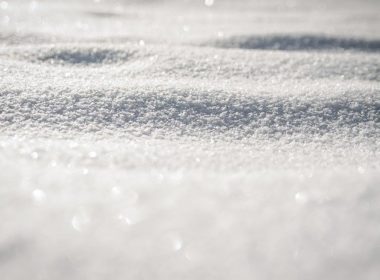
If we collect four 64 oz mason jars of snow at the Drinkwater School from the beach, garden, woods, and the tree line near our stream in March, let it melt, and then use a vacuum pump to filter the water and look under the microscope, how many pieces of microplastic fibers and fragments would there be, if any, and how do the four sites compare?
Instructions / How to do this investigation
MICROPLASTIC IN SNOW INVESTIGATION PROTOCOL
Edna Drinkwater School
Northport, Maine
ADVANCED PREPARATION:
- Gather tools
- Don’t wear polyester, if possible.
- Label mason jars ahead of time: key for location and sample number
TOOLS:
Sample collection:
- Gloves (not plastic)
- 64 oz mason jars x 8
- Metal spoons or measuring cups (don’t put in plastic, use glass or metal)
- Warm gear/ boots
- Anemometer
- Data table
- Clipboard
- Pencil
- Camera
Filtering tools:
- Vacuum pump
- Tube for vacuum pump
- Filter funnel for vacuum pump (with lid)
- Funnel support base for vacuum pump
- Flask (1000 mL)
- Filters (5 micron)
- Metal forceps
- Petri dishes
- Tape
- Sharpie
- Microscope
- Lab coats (100% cotton so as not to contaminate)
DATA COLLECTION STEPS:
Step 1: Gather sample collection tools
Step 2: Label the mason jars with location, and sample number.
Step 3: Plan out groups to collect samples in different locations
Step 4: Dress warmly
Step 5: Walk to location (be careful where you collect the data so you are only
collecting fresh snow and so as not to contaminate the sample)
Step 6: Use anemometer to record temperature and wind speed (meters/second) in data table
Step 7: Use metal scooper to pick up snow samples
Step 8: Put snow samples into properly labeled mason jar until it’s at 1750 mL (in liquid form, will reduce to around 500 mL)
Step 9: Put the lid on
Step 10: Record the physical characteristics of the snow (Snowflakes, Graupel, Polycrystals)
Step 11: Record the type of precipitation (Blizzard, Snowstorm, Snow flurry, Snow squall)
Step 12: Take a photo of the location
Step 13: Repeat with other locations
Step 43: Put the sample inside the classroom, preferably in a refrigerator
Step 15: Let the sample melt
Step 16: Use a weather almanac website and a map to record the following data for each snowstorm:
- Date
- Quantity of snowfall (cm)
- Duration of snowfall
- Direction of storm/wind
- Any bodies of water the storm passed over in its path
SAMPLE ANALYSIS STEPS
Filtering:
- Put on lab coat
- Check oil on side of pump for level to be in between minimum and maximum
- Connect tube onto brass tube twist
- Attach flask to tube
- Remove blue top
- Put blue base of filter container into flask
- Carefully pick up a 5 micron filter with forceps
- Put filter onto container right side up, making sure it’s flat and centered
- Put top section of filter back onto the base, making sure the magnetic pressure does not move the filter in the inside
- Take lid off of container
- Make sure all samples have the same amount of water to filter (500 mL) and pour extra out as needed
- Pour 500 mL water sample into container
- Put lid back on
- Turn on pump
- Run until water has filtered through entirely
- Once finished, use metal forceps to remove filter
- Carefully place into petri dish
- Add colored tape to edges of sample to hold down filter inside petri dish
- Tape close two sides of petri dish
- Record sample number and location on tape on cover of petri dish, making sure not to block sample from view.



Comments
Tell us how your data collection/analysis is going